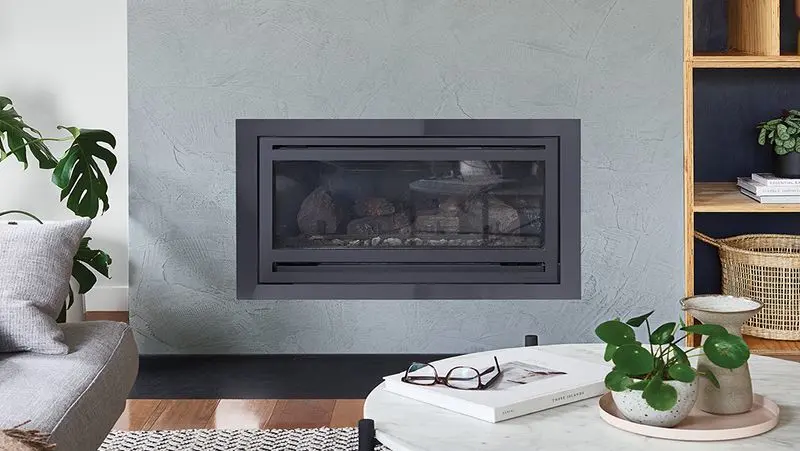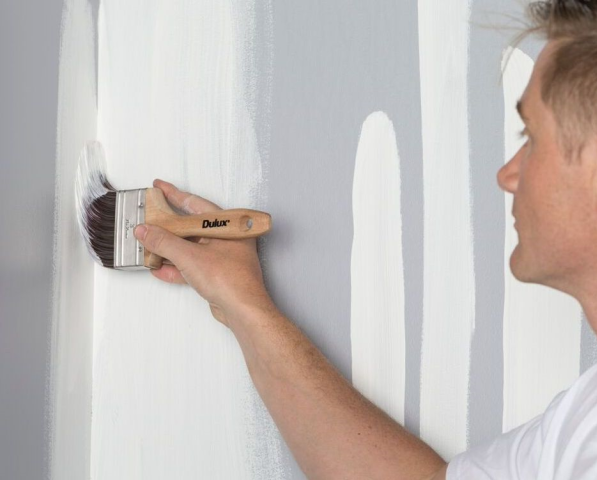
Tips to avoid a patchy ceiling
A patchy ceiling can make or break the look of a room. Uneven paint can cause a space to look unfinished, whereas a well-painted smooth ceiling gives a polished feel. Patchy ceilings can also be caused by streaks from the paint roller, brush marks or stipple from an uneven roller. Here’s how to give your ceiling an even, smooth look.
How To Guides
What makes ceiling paint look patchy and how to fix it?
Ceiling paints have a flat sheen level. This means light is diffused evenly across the surface, which can cause any imperfections to become easily spotted.
Usually, patchiness in dry ceiling paint is caused by not having a ‘wet edge’ as you paint. This means keeping the edge of the painted area wet so that when you roll into the next section, it blends smoothly so no lines appear.
The only way to even out a patchy ceiling finish is to re-paint the whole ceiling. Re-painting a small area can often make the patchiness more visible.
Here are some tips to avoid patchy paint on your ceiling:
Tips to avoid patchy paint
Reduce air movement
When air passes over a wet paint surface it brings out moisture in the paint, making it dry faster. Close doors and windows while painting to minimise air movement for a smoother finish.
Avoid warm air
Paint dries quicker on hot days, making it harder to maintain a wet edge. Paint during a cooler time of day, such as early morning and turn off heaters before painting if painting in winters.
Choose a good roller
Use a 12 - 18mm nap high quality synthetic roller to ensure a smoother, even finish. Some microfibre roller sleeves don’t deliver enough paint to the surface and can result in applying a thin film of paint which dries rapidly and causes lines or ridges.

Before using a roller
Use the correct amount of paint
Check the paint coverage on the side of the can to ensure you’re applying the right amount of paint. Spread it too thinly and it will look patchy; spread it thick and it can look lumpy or uneven.
Lay off at the right time
Work section by section laying off each section by moving the roller in long parallel strokes while the paint is still wet. This helps avoid passing the roller over paint that’s already started to dry and leaving noticeable edges.
Use a roller pole
Whenever possible, use an adjustable extension pole suitable for the height of the ceiling. This speeds up the painting process so you don’t have to climb up and down a ladder each time. A small roller may be more appropriate for painting above cabinetry.

Here's what you need to get started:
Products
Tools and Accessories
Medium nap synthetic roller (10-18mm)
Paint pot
Roller tray
Extension pole
Painter's tape
Remember:
The nap length of a roller refers to the thickness of the roller cover. Less than 10mm nap length won’t deliver enough paint, and can make it look uneven. Most ceilings need a 10-18mm nap sleeve.
Follow these 4 easy steps
Step-by-step
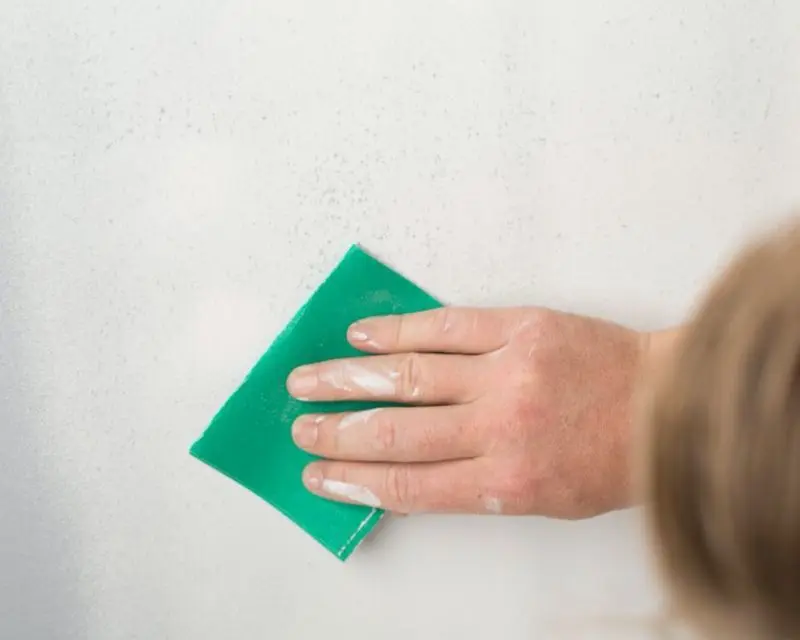
Preparation
Prep your ceiling by filling any holes with Selleys Spakfilla Rapid.
Once dry, use a fine sandpaper and give it a light sand for a smooth, consistent surface.
Wipe away any dust, then clean the ceiling with Selleys Sugar Soap to remove any dirt or grime.
Tape around cornices, edges and any downlights.
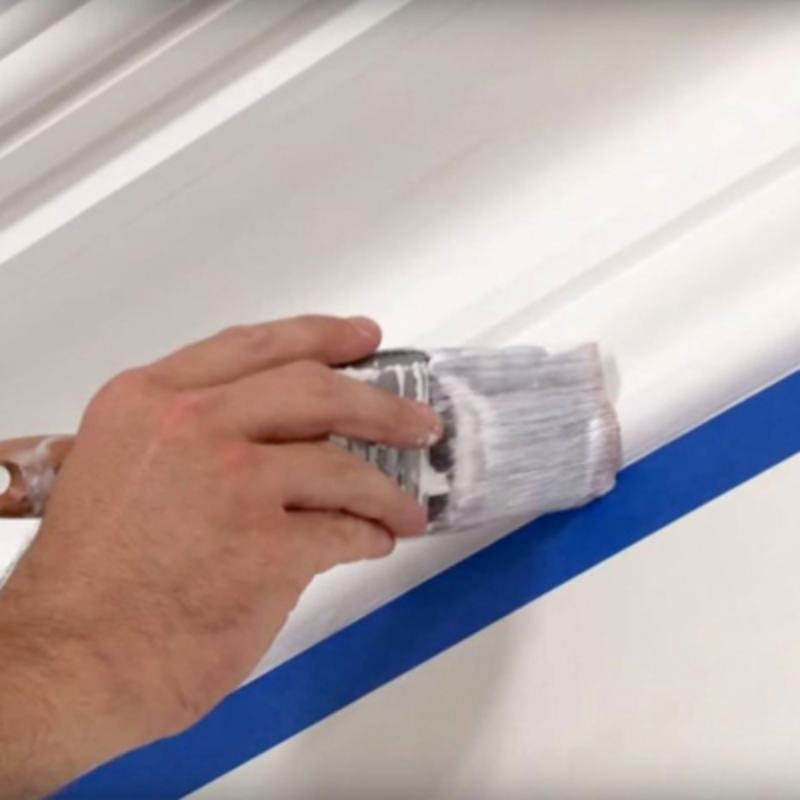
Cut in
Cut in around the wall edges with a brush - these are the areas a roller cannot easily reach. Maintain a wet-edge by cutting in larger areas in sections as you go. This will help to avoid ‘picture framing’ where unblended cut in areas remain obvious after rolling.
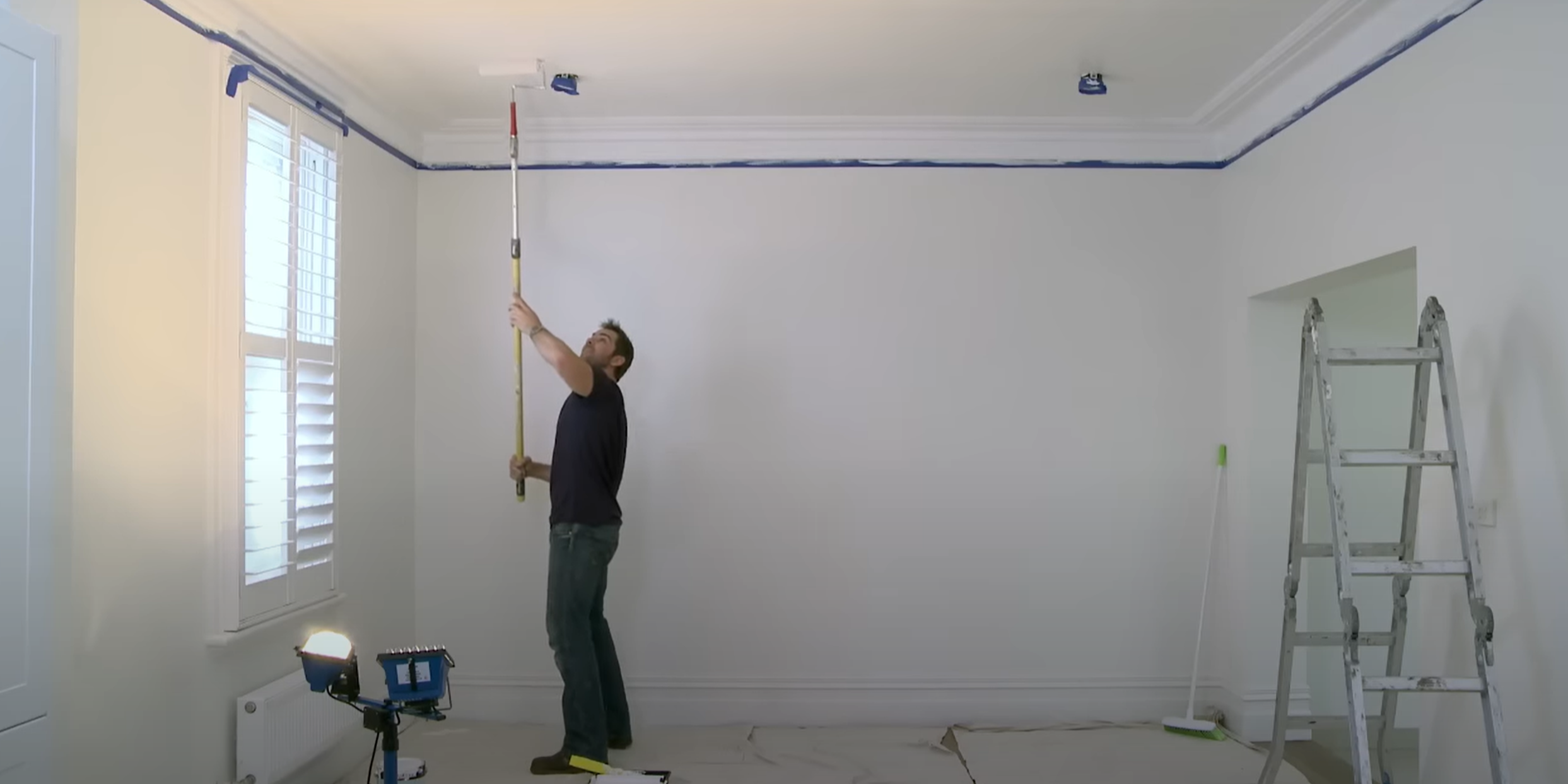
Use a roller
Make sure your roller is the correct width. If it’s too narrow, painting will take too long, making it harder to maintain a wet edge. Most ceilings need a 270mm wide roller sleeve with a roller frame and roller tray to suit.
Load your roller evenly with paint.
Begin in one corner and move the roller in a parallel movement.
Work in one metre sections, painting across, then down.
Roll as far into the previously brushed sections as possible for the best results.
Tip:
When a roller sleeve is used, then washed, it can start to lose some of its fibre and the ability to hold the right amount of paint. Make sure your roller is in good condition to deliver optimum smoothness.
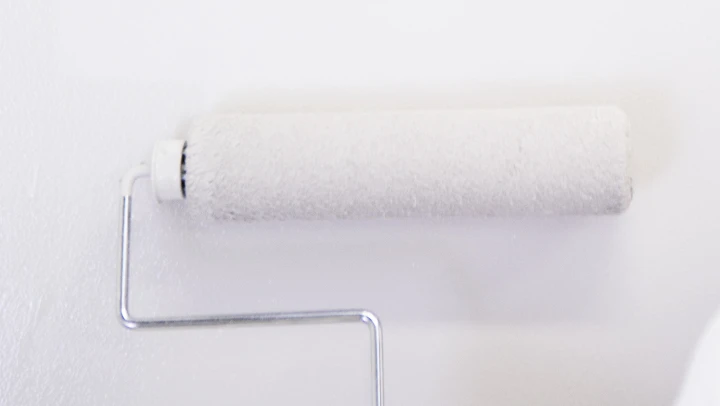
Laying off
Now that you’ve finished a large section of your ceiling, and while it’s still damp, you can begin laying off the paint. This is a crucial step in achieving a smooth and consistent finish. Using an unloaded roller begin in the top left corner of your ceiling and gently pull towards you in a straight line with no pressure. A lightness of touch will prevent new brush strokes from forming. Repeat this action, only this time, slightly overlap your last movement so your roller rubs away the line created by the previous stroke.
Interior how to guides
Nothing beats a great paint job, especially one you’ve done yourself. Give yourself the best chance at success by following these instructions.
The walls of your home colour your world. They are what set the mood for everyday life. So, the way you apply your paint can be just as important as the colour itself.
Brush up your painting skills with these simple tips and tricks from Dulux.
To use a roller you'll need a tray, frame, roller cover and possibly an extension pole. Make sure you have the right roller for the job.
New and improved
Dulux Wash&Wear®
For a superior washable finish, check out the all new Wash&Wear® Low Sheen, with its stain resistance and mould & mildew resistant technology which makes it ideal for all interior walls including high traffic areas.
Explore sample pots, A4 swatches and colour stickers.
Book now to have an online or in-home colour consultation with a qualified interior designer.
Ask an expert. Use LiveChat to speak to one of our consultants for help about colour, products, projects and more.
